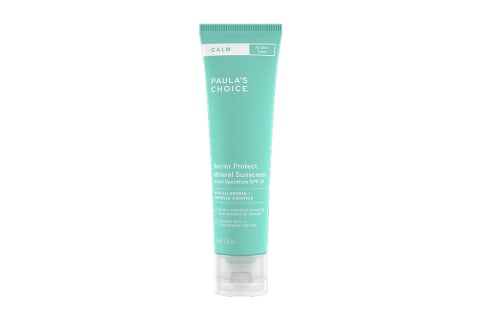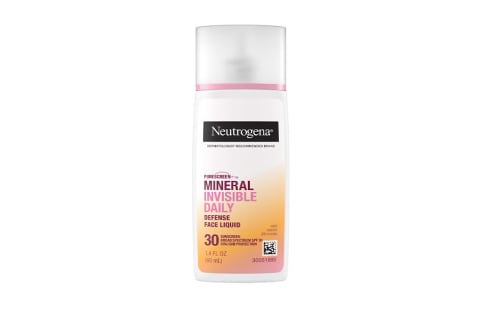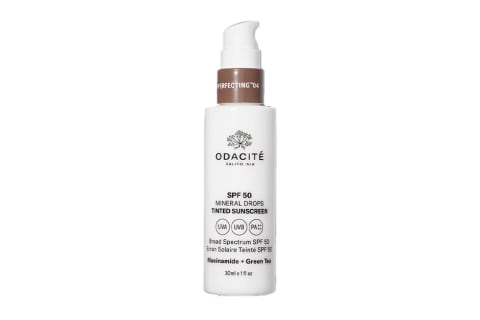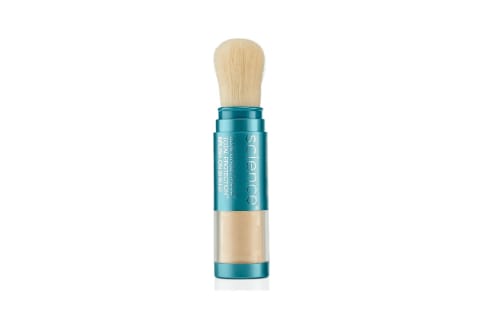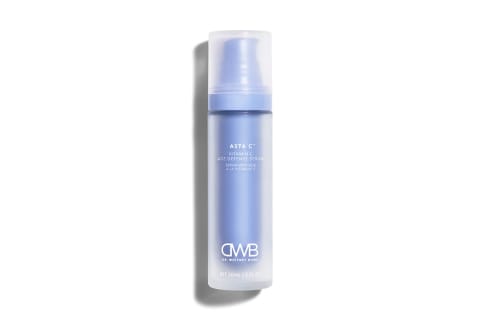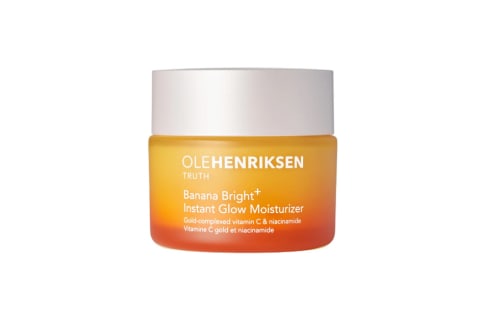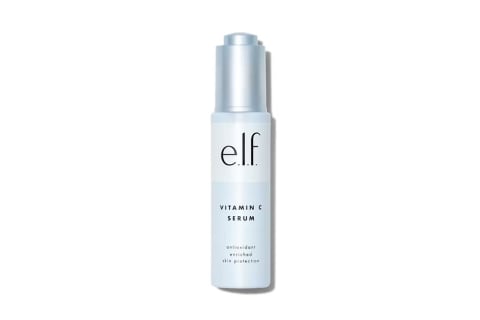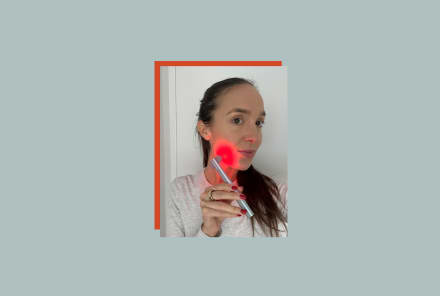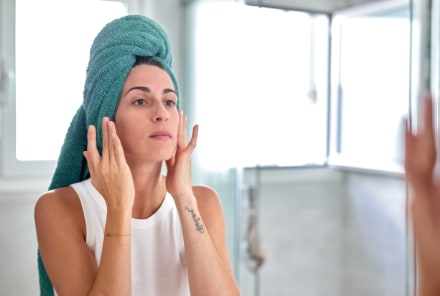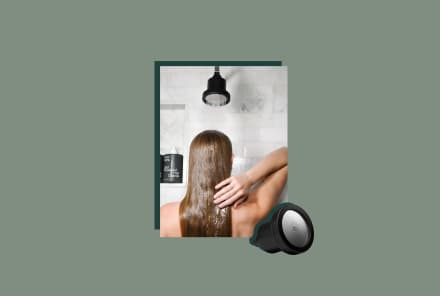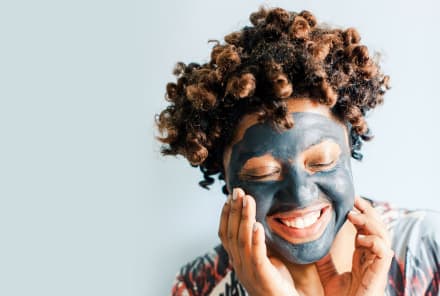Advertisement
Just A Long List Of Sun Care Tips From Skin Care Experts


Now that we're on the cusp of warmer days ahead, the anticipation of days spent outside— lingering in the sun and warm air—is almost unbearable. I don't know about you, but for me it's been a long winter. I'm in desperate need of some brightness.
It's important to get outside: Take ample time to enjoy nature, the fresh spring weather, and precious sunshine! Being outdoors brings with it a host of benefits that range from improved mood to lower rates of depression, reduced anxiety, better sleep, and so much more. The simple act of spending time near nature (be that a city park, dense forest, or sun-drenched beach) is one of the best tools we have to improve our overall well-being.
However, it's equally important to protect your skin prior to time outdoors and sun exposure. Ultraviolet radiation is a known human carcinogen and can trigger inflammation1 throughout the body. And then, of course, there's the aesthetic end: Sun damage can account for up to 80% of visible signs of aging2; ultraviolet radiation has the ability to penetrate the epidermis where it damages the skin cells, proteins, and elastic fibers that keep skin firm. Additionally it can trigger melanin production, which can result in dark spots or "sun spots" in people prone to them. Finally, it has the ability to affect the skin cells' DNA. This all leads to what we call photoaging.
The good news is that there are a lot of simple solutions to keep your skin safe while being outdoors.
Sun care is made to seem so complicated (and controversial) as of late. Scroll through any social media feed and you'll be bombarded with differing opinions on *the best and only* way to shield your skin. The reality is that there are a lot of effective ways to protect your skin from the effects of UV damage, and oftentimes it's a combination of tactics that's the way to go.
So, here, the best tips we've learned about sun care—plus, some of the best products on the market right now to add to your arsenal.
Find a sunscreen you'll actually wear—or better yet, find a few
One of the biggest—and annoying—debates in the beauty space revolves around mineral versus chemical sunscreen. But one of my favorite pieces of advice about this topic comes courtesy of holistic esthetician Lesley Thornton, who said, "The best sunscreen is the sunscreen that you'll actually wear. I don't argue with people about sunscreen types. Do you wear it? Great."
Personally, I use tinted mineral sunscreen, as I find it's the best option for my skin for a few reasons: I like some coverage to even out my skin tone, tinted sunscreens block visible light3 (which can cause dark spots), zinc oxide can provide a broader protection against both UVB and UVA, and mineral formulas tend to be better for reactive, sensitive skin.
What is "natural" sunscreen?
"Natural sunscreen" is not a regulated term. Usually when people talk about "natural sunscreen," what they actually mean is "mineral sunscreens." I suspect that many equate mineral or physical blockers with "natural" because the alternative SPF active ingredients are classified as "chemical." And in the beauty space, there's often a false dichotomy between chemical and natural. For the record, even natural things are chemicals—for example, water—so this distinction isn't warranted, but alas.
What about mineral vs. chemical?
Mineral sunscreens—sometimes called physical blockers, nonchemical, or inorganic—work by deflecting UV radiation. The two mineral ingredients used in U.S. sunscreens are zinc oxide and titanium dioxide. Chemical sunscreens—sometimes called organic due to the organic (carbon-based) compounds that work as the filtering ingredients—work by absorbing the UV rays, triggering a chemical reaction, which then transforms the UV into heat. These include oxybenzone, octinoxate, octisalate, avobenzone, homosalate, and octocrylene.
Apply enough & reapply as needed
To get straight to the basics: The face needs about a quarter of a teaspoon for the face, which comes out to be about two fingers' length of sunscreen. This is probably more than most folks are used to applying, but it doesn't take long to get used to.
As for reapplication, I love this very reasonable advice from board-certified dermatologist and collective member Whitney Bowe, M.D., in this Instagram post:
"When I'm working indoors or spending much more time inside, I apply sunscreen in the morning. Then, I'll head out for the day, usually to work," she says. "I don't work next to a window or in direct sunlight. On my way home, if it's still a little light out, I reapply my sunscreen, but I use a powder sunscreen over my makeup, which is something I won't primarily rely on during the summer or even in the morning. It's like a backup plan at the end of my day just to offer a little extra protection during my commute home."
Of course, if you're out in the sun all day, working up a sweat, or getting wet, you'll need to be more diligent with application: Always reapply after getting wet and at least every two hours, notes Bowe.
"During summer months (or vacation) when I'm at the beach, playing golf, or spending lots of time outdoors? Yes, yes, yes, yes. I reapply every two hours all day long," she says. "During those times, I also don't choose to wear makeup because then sunscreen reapplication over that makeup breaks me out. I choose a sunscreen that has a tint if I want a little extra coverage."
It's really all about what you're doing, what's your actual exposure to the sun, and what products you're using.
Related read: How to reapply sunscreen over makeup.
Use protective clothing & gear
Sunscreen gets all the attention, but please know that it's not the only tool you have at your disposal. As board-certified dermatologist Jeanine Downie, M.D., told me, she relies on UPF clothing when outdoors, especially for runs or working out.
In case you're not aware, UPF clothing is made from fabrics that have protective qualities against ultraviolet radiation. There are all sorts of UPF clothing options, such as hats, workout shirts, rash guards, and cover-ups.
Just like finding the right sunscreen, there are a few things to consider about protective clothing, according to the Skin Cancer Foundation:
- Opt for darker shades, which reflect or absorb UV rays, shielding your skin in the process. These colors tend to have higher UPF values.
- Find items with a looser, more natural fit. When fabric stretches, UV light is able to peek through more easily.
- Fabric matters, but there's some nuance involved. For example, densely woven fabrics (like jeans) offer protection as there's not as much space for the UV light to get through. Unbleached natural cotton has fibers that can absorb UV light. Or shiny fabrics—such as polyesters, satin, and silk—can reflect light.
- Shop brands that use UPF labels to take the guesswork out of it. Lots of brands—especially swimwear and sports brands, like Coolibar, Athleta, and Land's End—share the clothing's UPF quality. Look for it on the tags, shopping page, or label.
Use antioxidant serums & moisturizers to boost sunscreen efficacy
Antioxidants help stop the cascade of free radical damage triggered by UV radiation.
I'm regularly reminded of this wonderful advice from board-certified dermatologist Rachel Nazarian, M.D., of Schweiger Dermatology Group about antioxidants: "People often ask how many antioxidants you should be using regularly; the answer is: the more the better. The more you can help neutralize unstable molecules caused by free radical formation, the longer you can salvage the health of your cells and skin. There's really no limit to how much you can protect and repair your body!"
In fact, research has shown that using antioxidants alongside SPF can help improve the protective qualities of sunscreen4, especially of UVA and visible light.
Prioritize antioxidants in your diet
Growing research shows that ingesting certain nutrients can bolster your skin's ability to deal with UV radiation. More specifically, there are certain antioxidants that have been shown via research to have photoprotective qualities by both absorbing UV rays and helping neutralize UV-induced free radical damage5.
For example, astaxanthin is able to enhance skin photoprotection from UV rays and promote a healthy inflammatory response. Studies show astaxanthin delays the impacts of UV exposure6, which means less painful, bright red skin now and fewer wrinkles later.
Beta-carotene has been shown to support skin health7, resulting in smoother skin and elasticity—again, the most common and visible markers of photodamage. It's able to do so by directly absorbing UV rays8. Another class of antioxidants to look for is resveratrol, which has been shown to help manage UV-induced skin damage9.
How do I get these nutrients?
Avoid peak sun hours & don't sunbathe for sport
While sunscreen offers protection, it's not a perfect product (no topicals are). It cannot and won't block all UV rays, even if you apply sunscreen perfectly as recommended (and most people don't). So if you apply your product of choice and then sit outside to bake in the midday sun thinking you've done your due diligence, think again. SPF will protect you, but you need to think about the other ways in which you're protecting your skin too.
As chemist and author of Ingredients George Zaidan once told me, we can't view SPF as a hall pass to spend all day in the sun, risk-free: "Don't let sunscreen be your excuse to overdose on sun exposure," he says.
What does this mean in practice? It means being smart about the ways you spend your time in the sun too.
"The one thing we know really, really well is that too much sun causes skin cancer—and we have some evidence that sunscreen helps prevent skin cancer. So personally I'm going to tailor my behavior to target both of those things," says Zaidan. "For example, if I had to be out in the sun for a long time in the middle of the day in the summer, I'll wear sunscreen, but I'll also wear a hat and sunglasses. I will also try to avoid too much direct sunlight—so I won't roast myself on the beach."
Post-sun care is critical
I won't say that post-sun care is as important as pre-sun care (you know, applying SPF), but I will say that I think it deserves more attention. Of course, the best thing you can do for your skin is to protect it from UV exposure by utilizing sunscreen and being smart about the time you spend in the rays. But after the fact, you also want to make sure you're comforting and caring for it.
Post-sun (even if you didn't get a burn), the most important thing is to rehydrate your skin. A long day outdoors can dry out the skin due to a wide range of causes, from salt water to chlorine, heat, and so on. Give your skin the tall drink of water it's desperately craving.
"The gold standard for a natural product is aloe," board-certified dermatologist Christina Chung, M.D., once told mbg. "It works well for post-sun care because of its anti-inflammatory properties."
While it's the most famous, it's certainly not the only one. Oat extracts, like oat oil and colloidal oat, have soothing properties as well. "Extracts of oat have been shown to lessen inflammatory mediators in the skin, giving significant clinical improvements in skin dryness, scaling, roughness, and itch intensity," board-certified dermatologist Loretta Ciraldo, M.D., FAAD, once told us about using the ingredient in skin care.
Get your vitamin D via supplements
The argument against sunscreen usually comes back to vitamin D levels. Vitamin D is a vitamin and hormone necessary for several functions in the body and is often called "the sunshine vitamin." Vitamin D3 is synthesized in our skin via UVB sunlight exposure.
But as certified dermatologist Shasa Hu, M.D., professor at the University of Miami and cosmetic director at Skin of Color Division, shares with me there are better ways to get vitamin D.
To start, getting adequate amounts of vitamin D via the sun is challenging. The amount of sunshine required to reach sufficiency isn't an exact science and varies greatly depending on a person's individual makeup, body composition, and environment.
"There's this myth that you cannot use sunscreen because if you're using sunscreen, you're gonna become vitamin D deficient," says Hu. "But the reality is that there are much safer and more reliable ways to take vitamin D than go get sunburned and potentially get skin cancer."
And even if you spend all day in the sun, without sunscreen, there's no guarantee that you'd reach sufficient levels. Hu points to studies showing that even folks who are exposed to direct sunlight all day, such as farmers, still struggle with vitamin D deficiency10. In fact, most Americans struggle with deficiency or insufficiency11.
In addition, our ability to synthesize vitamin D via the skin declines with age. "Our skin's capacity to convert vitamin D from sun exposure declines over age, but our GI absorption stays relatively stable," she says.
Want a new vitamin D supplement? You've come to the right place: Check out our favorite vitamin D supplements here.
Last but certainly not least: Visit your derm
A regular derm visit to check out your moles is one of the most vital steps in this process. And doing so regularly will mean early detection for any signs of skin cancer. Dermatologists typically recommend getting checked at least once a year after the age of 30. (Moles can develop and grow in your teens and 20s, but anything new post-30 should be evaluated.) If you have a family history of moles, it's better to be safe and get checked twice a year.
And if you're ever concerned about a mole in particular, it's best to just schedule the visit sooner rather than later. See our guide to when you should get a mole checked out for more information.
11 Sources
- https://www.sciencedirect.com/science/article/pii/S0160412024001211#:~:text=DNA%20damage%20and%20extracellular%20matrix,et%20al.%2C%202020).
- https://www.ncbi.nlm.nih.gov/pmc/articles/PMC3790843/
- https://pubmed.ncbi.nlm.nih.gov/32335182/
- https://pubmed.ncbi.nlm.nih.gov/35587114/
- https://www.ncbi.nlm.nih.gov/pmc/articles/PMC6098906/
- https://www.ncbi.nlm.nih.gov/pmc/articles/PMC6073124/
- https://www.ncbi.nlm.nih.gov/pubmed/20516658
- https://academic.oup.com/ajcn/article/96/5/1179S/4577133
- https://www.ncbi.nlm.nih.gov/pubmed/18221451
- https://www.ncbi.nlm.nih.gov/pmc/articles/PMC7049620/
- https://pubmed.ncbi.nlm.nih.gov/29644951/
Watch Next
Enjoy some of our favorite clips from classes
Enjoy some of our favorite clips from classes
What Is Meditation?
Mindfulness/Spirituality | Light Watkins
Box Breathing
Mindfulness/Spirituality | Gwen Dittmar
What Breathwork Can Address
Mindfulness/Spirituality | Gwen Dittmar
The 8 Limbs of Yoga - What is Asana?
Yoga | Caley Alyssa
Two Standing Postures to Open Up Tight Hips
Yoga | Caley Alyssa
How Plants Can Optimize Athletic Performance
Nutrition | Rich Roll
What to Eat Before a Workout
Nutrition | Rich Roll
How Ayurveda Helps Us Navigate Modern Life
Nutrition | Sahara Rose
Messages About Love & Relationships
Love & Relationships | Esther Perel
Love Languages
Love & Relationships | Esther Perel
